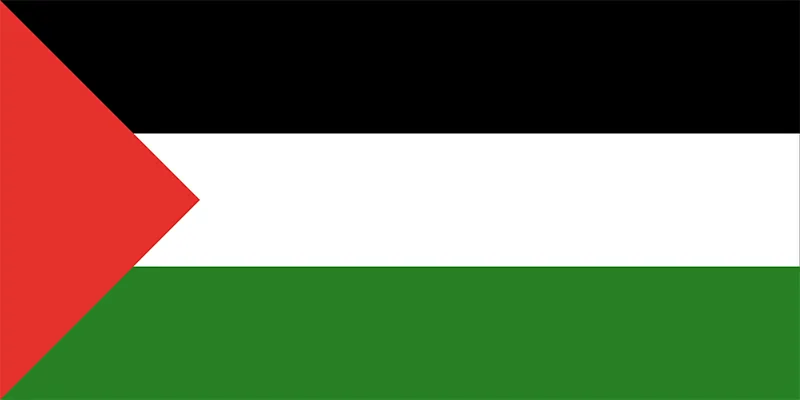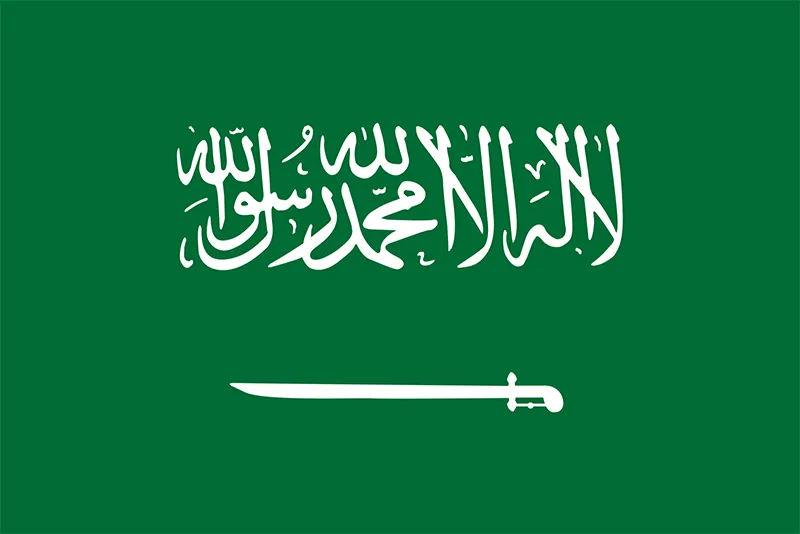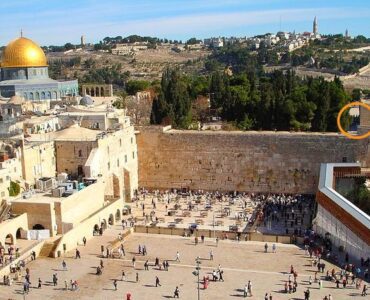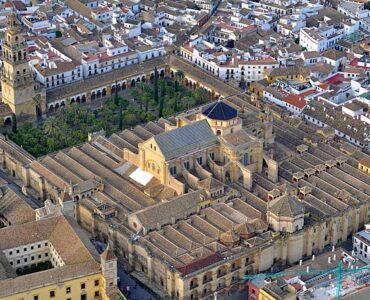This is the door of the Ka’bah on its eastern side. Originally it was at ground level but was raised when the Quraysh rebuilt the Ka’bah.
The first time a door was installed
- When Ebrahim (عليه السلام) built the Ka’bah, he made two openings at ground level. People entered from the eastern opening and exited through the western one.


- It’s believed that the first time an actual door was installed was by King Tubba in the late 4th century CE. He was a king of Yemen who had converted to Judaism. King Tubba’s door was made from wood and remained in place until the early Islamic era.
The door in the time of the Quraysh
- When the Quraysh renovated the Ka’bah they raised the eastern side door high above the ground to prevent people entering the Ka’bah at will. The opening on the opposite side was sealed off.


- Aisha (رضي الله عنها) once asked the Prophet (ﷺ) what reason the Quraysh had for raising the door above the ground. The Prophet (ﷺ) replied, “Your people did it so that they could permit into the Ka’bah only those people whom they approved of and could prevent those whom they pleased. Had your people not been recently removed from ignorance and had I not feared that they would be averse to change, I would have included the Hateem within the Ka’bah and brought the door level with the ground.”
The door in the era of Sultan Murad
- The Ka’bah was partially rebuilt in 1630 CE during the era of the Ottoman Sultan Murad IV after heavy rain in Makkah caused the eastern and western walls to collapse.
- The Sultan hired Egyptian craftsmen to manufacture a new door that was similar in design to the previous one. They decorated it with geometric shapes plated with silver and coated the rest with Benedict gold.


- This door was in use for more than 300 years and was only replaced in the Saudi era. The door still survives and is now part of the Roads of Arabia exhibition at the Louvre Museum in Abu Dhabi.
The door in the reign of King Abdul Aziz bin Saud
- In 1944, during the reign of King Abdul Aziz, the door of the Ka’bah was changed. The replacement door was made from aluminum, supported with bars of iron and covered with plates of silver plated with gold.
- This door was in place until it was replaced in the 1980s. This historic door can be seen in the The Two Holy Mosques Architecture Exhibition in Makkah.


The door in the reign of King Khalid
- This is the current door of the Ka’bah.
- In 1977, King Khalid noticed scratches at the bottom of the previous door when he was praying inside the Ka’bah and ordered for a replacement to be made. His successor, King Fahd supervised the project and completed it during his reign.
- The door is made from 2.5cm thick aluminium and is 3.1m high. It is coated with silver plates dipped in gold.
- 15 of the 99 names of Allah have been embroidered in Thuluth Arabic script. In the middle, there are circles containing Qur’anic verses, Islamic phrases and historical annotations.
- The present Ka’bah door contains over 280kg of pure gold, one of the largest gold masses in the world.


The inscriptions on the door of the Ka’bah
- At the top of each door is inscribed: “Allah Jal jalaalah Muhammad sallallaahu alaihi wasallam”.
- Beneath all of this is inscribed:
In the name of Allah, the Most Compassionate, the Most Merciful. Enter with peace and safety”
(Surah Hijr: 46)
Allah has made the Ka’bah the sacred house, as well as the sacred months a means by which (the physical and spiritual safety and well-being of) mankind is maintained.”
(Surah Maa’idah: 97)
Say, “O my Rabb! Allow me to enter a pleasant place, allow me to leave pleasantly and grant me such authority from Yourself that is coupled with (Your) assistance.”
(Surah Israa: 80)
Your Rabb has made mercy (towards you) compulsory upon himself.”
(Surah An’aam: 5)
Your Rabb says, “Supplicate to Me and I shall respond.”
(Surah Mu’min: 60)
Beneath all of this is inscribed:
Say, “O My bondsmen who have wronged their souls (by committing kufr or other sins)! Never lose hope of Allah’s mercy.”
(Surah Zumar: 53)
References: The History of Makkah Mukarramah – Dr. Muhammad Ilyas Abdul Ghani, Alarabiya.net, MadainProject.com
















